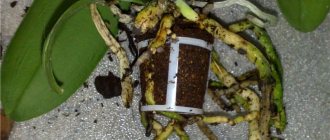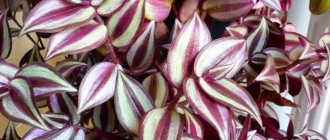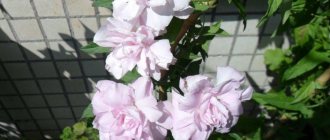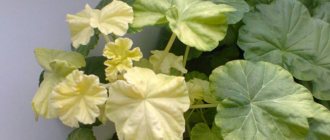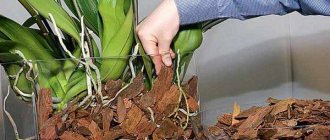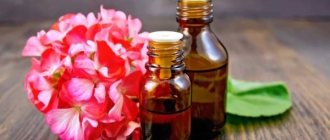Diagnosing problems with plants is similar to diagnosing diseases in people - that is, this is not an easy matter and requires experience. Still, let's try to figure it out and describe all reasons, according to which the indoor rose does not fulfill its main purpose - it does not produce abundant and beautiful flowering.
Why doesn't my indoor rose bloom?
The main reasons for the lack of flowers:
- Little light.
- Unsuitable soil.
- Indoor climate.
- Lack of nutrition.
- Excess nutrition.
- Incorrect formation.
- Diseases and pests.
Let's look at each reason in more detail:
Light
Roses are light-loving plants .
The best window for an indoor rose is southwest or southeast. An eastern window is also acceptable, but you should make sure that the variety is not one of the most capricious. South-facing windows are only permissible if they are not too hot - roses have smaller flowers and leaves in the heat, and flowering does not last as long. Analyze your own conditions. South window to south window - discord. Maybe there is a tree in front of your window, and the window itself is on the first floor, so even on the south window the home rose may simply lack light. If the rose does not have enough light, or the apartment has only northern windows, you can organize additional lighting with artificial light . Roses feel great in this kind of lighting, if, of course, it is chosen correctly, and besides, modern choice allows you to arrange this without compromising the design of the room.
The length of daylight required for a rose to bloom should be 10-12 hours.
Perhaps the rose has enough light, but the bright rays of the sun heat up the pot too much (especially for dark plastic pots) and the soil dries out, heating the roots. Rose roots still like relative coolness. Therefore, it is better to immediately plant the rose in pots of light shades, or organize shading near the pot.
Why indoor roses don’t bloom Indoor plants
In order to grow a rare plant in your flower garden, you need to know the secrets of its contents.
Most people want to see exotic flowers. The secrets of breeding large species of plants are different. Each plant requires an individual approach. In this article, the editors intended to provide many tips to avoid mistakes when keeping an unusual flower.
You should determine for yourself which class your pet belongs to.
Let's talk about the reasons why indoor roses don't bloom
Among the main ones we can safely highlight the following.
Although flower shops sell roses in bloom all year round, their natural bud-setting time is spring and summer.
In stores, they achieve the appearance of flowers in winter with special hormonal and vitamin preparations, which ultimately can even lead to the death of the plant. At home, these drugs are simply not applicable.
Therefore, do not wait for the appearance of buds in December and January, everything will take its turn.
Since roses are light-loving plants, their maintenance requires special placement: on southwest or southeast windows. On windows facing north, you should not expect abundant flowering from them. However, you should not overdo it - by placing roses on south-facing windows, where in the summer months it will be too hot for them, their inflorescences and leaves will become small.
If the apartment windows face only the north side, you can use artificial lighting, thereby lengthening the daylight hours. Place the lamps at a distance of no more than 30 cm from the top of the plant.
The optimal length of daylight for good flowering of indoor roses is 10-12 hours. This is why it is important to turn on the backlights when it starts to get dark outside and leave them on until midnight.
Thanks to properly created artificial lighting, miniature roses can bloom until winter. It is also worth considering the temperature factor on sunny windows: a heated pot with plants will lead to drying out of the earthen substrate and, consequently, the root system.
Roses are very sensitive to such influences, so light-colored pots are optimal for them. You can also protect yourself from the rays using ordinary white sheets of paper. Also, do not forget about regular watering.
For indoor miniature roses, soil with a neutral pH of 6.5-7.5 is preferred. If the plant is planted in soil with an inappropriate level of acidity, it will not bloom or flowering will be very weak.
Indoor roses are categorical about drafts. Any sudden hypothermia of the plant (below 16-18 C°) will lead to shedding of flowers and buds.
Overheating of the plant will also negatively affect the flowering of miniature roses. If the temperature on the windowsill rises above 22-25°C, then simply spraying the plant with a spray bottle is not a sufficient measure.
It is necessary to shade the window to protect the flowers from direct sunlight during the hottest time of the day. It is also necessary to wash the leaves several days a week in the evening after sunset.
It would be useful to place a container near the plant with water, which will humidify the air.
This factor is associated not only with starvation of the rose, rare replanting or fertilizing, but also with an excessive amount of fertilizer, since an excessive concentration will cause a serious burn to the root system of the plant.
Improper transplantation of a rose can also be the reason why it does not bloom. This may be due to the pot being too tight or, on the contrary, being too spacious, or due to damage to the roots during replanting.
In addition, a rose transplant carried out in autumn or winter can not only cause a lack of flowering, but also the death of the flower itself.
When damaged by pests, miniature roses experience a strong decrease in the rate of foliage growth and the setting of new buds. Carefully inspect the plant and if there are signs of the presence of parasites, immediately begin appropriate treatment.
We hope that our tips will help you avoid problems with rose blooms.
Why the rose does not bloom: the main mistakes of novice gardeners
It is not for nothing that the rose is considered the queen of flowers: it is difficult to name a more majestic flower. And today we will try to understand such an important issue - why the rose does not bloom. but this happens very often; errors in care or errors in planting in general can lead to such an unhappy event for the gardener.
True, the situation is almost always fixable, so we will consider in detail why the rose does not bloom, as well as what needs to be done in each individual case.
- Incorrectly selected or treated soil
Roses love fertile, loose soil, so soil that is too dense and heavy is unlikely to be suitable. If, however, the choice is small, and a place with depleted soil is chosen, then it is worth approaching the issue of feeding more carefully. A mandatory stage in preparing a hole for planting is loosening the soil to a depth of 50-70 cm; it is to this depth that the roots of the rose grow.
2. Wrong location
Roses love open spaces, well lit by the sun and protected from the wind. In the shade and in a draft, these fragile flowers will not only not bloom, but will generally develop very slowly.
3. Insufficient watering
Roses can withstand drought, but the plants devote all their efforts to maintaining vitality, and not to flowering. Therefore, in hot weather, the soil around the bushes should be regularly moistened.
4. Poor wintering
A rose bush can stop the development and formation of buds if it has not overwintered well or is frozen. Therefore, you need to approach this issue very responsibly, starting preparation even before the heavy rainy season, otherwise the bush will gain moisture.
5. Incorrect pruning
This is a whole science, and different groups and varieties of roses have their own specific rules.
For example, if roses bloom a second time, you need to remove the upper part of the shoot with the dried flower, cutting it along the oblique and leaving 5-8 mm above the next eye.
Care should be taken when pruning climbing roses of the Rambler group, which bloom only on last year's shoots, removing only the frozen ends of the lashes - then you won't have to wonder why the rose doesn't bloom.
Periodically, old bushes need to be rejuvenated, also pruning according to the rules, removing thin and weak branches, as well as old woody lashes, leaving 3-5 strong lashes.
6. “Wildness” of the rose bush
Since most roses in our area are grafted and not rooted, it is possible to miss and not remove wild shoots from the rootstock, the bush on which the cultivated rose sprout is grafted, in time.
These wild lashes gradually weaken the plant, and the rose can easily lose its varietal qualities. It is very easy to recognize the insidious growth: it grows from below, the leaves are smaller, and there are a large number of thorns.
As soon as you see something like this, tear up the ground and cut off the branch at the very base.7.
7. Incorrect feeding or overfeeding
Sometimes a rose bush, instead of flowers, begins to violently form lush foliage and actively grow upward. This, in most cases, is a consequence of an excess of nitrogen fertilizers. This can be corrected by adding phosphorus-potassium fertilizers or simply ash, but the effect will not be noticeable immediately.
We hope that the situations discussed will help you avoid mistakes and now you already know exactly why the rose does not bloom.
P/S at the end I would like to remind you of other interesting articles from this series
The leaves of indoor roses turn yellow and dry out. The plant is more than five years old, but it still has not bloomed. Please advise how to improve his health.
Judging by the plant leaf sent, we are talking about hibiscus, or Chinese rose (Hibiscus sinensis) - one of the most beloved indoor plants by many. It has high nutritional and hydration requirements.
Drying out of the earthen coma, dry air and insufficient lighting lead to the fact that the buds on the plant do not form or the ones that have formed fall off. The hibiscus drops buds even if it is turned or moved to another place.
The reader’s letter contains the following phrase: “After transplanting into a large pot, the hibiscus began to fade.” You need to know that transplanting into a large container is not always good for a houseplant. The fact is that a weak root system is not able to use all the water from the soil of a large pot.
Roots without access to air in waterlogged soil die, and the plant is not only depressed, but may even die.
Hibiscus will not bloom in a place in the room that is not exposed to direct sunlight.
On one of the editorial floors, in the hall facing north, where the sun never shines, a large hibiscus plant grows in a large wooden flower garden. For more than ten years it never bloomed.
And at the same time, the plants grown from its shoots in small pots bloom profusely with wonderful double flowers.
Therefore, in order for your Chinese rose to bloom, dear Nadezhda Dmitrievna, you need to not over-water the soil of the flower garden where it grows. It should also be placed in a well-lit place and care should be taken to ensure that the plant receives sunlight for at least a short time.
Since we are talking about hibiscus, we draw the attention of gardeners to the fact that delicate leaves that lack protective pubescence can be parasitized by aphids, spider mites, and whiteflies. thrips, and on the stems - scale insects. And against them, treatment with insecticides (Arrivo, Sherpa, Aktara) or acaricides (against ticks - Neoron, Flumite, Omite) is necessary.
It is possible that the leaf tissue on the reader's plant is unevenly lightened, damaged and deformed due to damage by the bronze spot virus, which is spread by thrips. Another virus, yellow vein mosaic, causes the formation of light, rounded spots on the leaves.
Several types of parasitic fungi that have settled on the leaves may be involved in the appearance of brown spots of various shapes and sizes.
The causes of chlorosis, in which the leaves turn yellow, are most often too low a room temperature and excessive moisture in the earthen clod.
We have described several possible causes of the depressed state of hibiscus. Read our material carefully, diagnose the plant’s illness and choose the means to improve its health.
Hibiscus. Chinese rose. Problems of growing Chinese roses
The Chinese rose is also called the Asian beauty, for its beautiful and lush flowering.
The problems that you may encounter when placing a Chinese rose (hibiscus) at home are completely solvable.
Abundantly and for a long time - from April to October. Single and double flowers can reach 16 cm in diameter.
What to do if a Chinese rose (hibiscus) drops its leaves
If the leaves fall in winter, the temperature in the room is too low or the plant is in a draft.
Solution. Reduce watering and move the plant to a warm place.
If a rose loses its leaves in the summer, it may be caused by overwatering the plant.
Solution. Let the soil dry out and reduce watering.
Why doesn't the Chinese rose bloom?
There can be many reasons: excess nutrition with nitrogen fertilizer, lack of light, heat in the apartment.
Solution. It is necessary to switch to fertilizing with phosphorus-potassium fertilizers. Move the plant to a cool place closer to the light source.
Chinese rose flowers are called “flowers of love” or “flowers of beautiful women.” They are a symbol of the island of Haiti and in India they are woven into wedding wreaths.
This may be caused by dry air or a change in the angle of light hitting the plant.
Solution. It is recommended to spray the Chinese rose daily from a spray bottle with water at room temperature.
It is necessary to make a “light mark” on the pot - mark with a marker or bright paint the side of the pot facing the light source.
If hibiscus has spots on its leaves, what should I do?
Most likely, you fed the flower with fertilizers. Or he doesn't have enough light.
Solution. Stop feeding for a while and provide the plant with good lighting.
If the leaves are very weak, develop poorly, and flowers do not appear, the plant lacks nutrients.
Solution. Try applying mineral fertilizer more often - once a week. But in order not to burn the roots, you need to halve the concentration.
There are plants that will grow well in unpretentious conditions - even indoors or in the cold. Understanding which class the flower is assigned to, it becomes...
Photos of gloxinia Photos of beautiful gloxinia
Gardeners want to grow exotic flowers. In order to see an exotic plant on your windowsill, you should know the subtleties of breeding.
The Tale of the Tulip Aunt Mary's Fairytale Flower
Everyone wants to see beautiful plants. To grow a flowering plant in your greenhouse, you must follow the secrets of breeding. Exotic.
Photos of Pachyphytum Photos of Pachyphytum
In order to see a flowering plant in your garden, you need to find the secrets of its contents. Most people respect beautiful plants. Secrets of growing large groups of flowers.
Northern orchids Northern forest orchids
There are flowers that will grow well in any environment - be it at home or in the cold. Understanding k.
Pink periwinkle In the home and garden: catharanthus and company
Most people love bright flowers. In order to grow a flowering plant in your garden, you must follow the subtleties of care. An exotic living creature requires a careful approach.
Chinese garden - harmony of yin and yang (yin-yang) The principle of creating a Chinese garden
.
.
Most people want to grow exotic flowers. To see a flowering plant in your garden, you need to know the subtleties of its contents. In this article .
Caring for a palm tree Growing and caring for a palm tree at home
Walking next to a beautiful flower garden, it is impossible not to stop looking at some amazing bush. And for everyone.
Unknown about the known Interesting stories from the life of plants
Most people respect exotic flowers. In order to have a flowering plant on your windowsill, it is important to use.
Source: https://btf.su/cvety-i-komnatnye-rasteniya/pochemu-ne-cvetet-komnatnaya-roza-komnatnye-rasteniya
Improper soil and replanting
Roses prefer soil with neutral acidity . Unsuitable acidity leads to the absence of flowers, or to their impoverishment. To check the acidity of the soil, it is enough to buy a special indicator; it is inexpensive and is sold in almost any flower supply store. Acidity should be at pH 6.5-7.5.
It is also worth paying attention to the mechanical properties of the soil . Many people do not attach importance to this, but this is one of the key factors in hydrating and nourishing the plant. The soil can hold too much moisture, which, combined with the coolness in the room, contributes to root souring and fungal diseases. Or, on the contrary, the substrate may be too loose, water- and breathable (this is often the case with purchased soils with a high peat content) - the rose in such soil will regularly dry out, especially if the room is hot.
In our practice, we encountered similar cases - too small a pot and heat, such a rose had to be watered several times a day, and still the owner did not have time, the lower leaves of the plant regularly turned yellow and flew off, it grew poorly and, of course, could not bloom - replanting in a more spacious pot and more nutritious, dense, moisture-absorbing soil solved the problem.
Pay attention to the size of the pot - is it too small, too spacious, has the plant recently been replanted, did it have to be replanted at the wrong time (autumn or winter)?
You should not expect flowers from a freshly transplanted plant , even if it produces buds. It will take 1-2 months to adapt and restore the root system; it is better not to overload the plant and remove the buds.
Many are in a hurry to replant a rose immediately after purchase, knowing that the soil in which the plants are sold is not entirely suitable for their permanent habitat. You shouldn’t always rush into this; look at the condition of the flower. If the rose is healthy and seems to be doing well, you should give it time to acclimatize to the new conditions for several weeks, and only then proceed with replanting.
Why the Chinese rose does not bloom, rules of care and stimulation for flowering
The tropical plant hibiscus is known in indoor floriculture under the common name Chinese rose. Although hibiscus has no relation to either real roses or wild rose hips. This plant is a completely different kind of plant.
In indoor floriculture, hibiscus is in demand due to its beautiful flowers, which also serve as a useful brew for refreshing and invigorating tea. Many lovers are waiting for flowers.
pamper their plants, creating the best conditions for them, in their opinion.
And if the plant still does not produce flowers, they ask why the Chinese rose does not bloom or blooms very rarely, producing one or two flowers? Let's try to understand the intricacies of growing hibiscus.
Chinese hibiscus or Chinese rose in nature
The very name of this plant suggests that its homeland is China. From the southern regions of this country, hibiscus, with the help of humans, appeared in almost all geographical areas with a tropical or subtropical climate.
In countries with cold climates, where Chinese roses are grown indoors and in greenhouses, flower growers must remember the tropical origin of the plant and, even in winter, maintain a temperature of no lower than + 15 degrees, and in summer no lower than +22 +25 degrees.
The Chinese rose belongs to the genus Hibiscus, family Malvaceae. When growing wild, it is a fairly tall shrub; it reaches a height of about three meters. The plant is most often evergreen. The leaf blade is slightly corrugated, dark green, shiny, with serrated edges. The leaves are 10–15 cm long. They have petioles.
The flowers are large, when the buds open, the diameter of many flowers exceeds 15 cm.
There are white, cream, scarlet, pink, lilac flowers. There are forms with simple and double flowers. The stamens of the Chinese rose are folded into a long narrow tube and protrude forward from the flower. The petals are thin, no thicker than a piece of paper.
Flowers live for one day, but, as a rule, new ones open every day, so flowering is continuous for several weeks. In order for such flowering to occur even when grown indoors, the Chinese rose must create the appropriate conditions.
Conditions for growing hibiscus indoors
Before purchasing a plant, it needs to choose an appropriate location. The pot with the Chinese rose should be placed in a very bright place, however, in the summer months the flower should be protected from direct sunlight.
It is important to monitor the temperature. Considering that seasonal fluctuations are unlikely to be avoided, in winter the temperature in the room with the Chinese rose should not fall below 12 - 15 degrees.
At temperatures + 10 and below, the leaves turn yellow and fall off.
Watering and humidity
Starting from March, the plant needs regular watering. Frequency: every three days. However, it is necessary to avoid waterlogging and stagnation of moisture. In the warm season, the plant needs additional moisture. It is good to spray the rose, wipe the leaves with it and even moisten the floor in the room where this flower stands. If the humidity is too high, ventilate the room with the flower.
Feeding and replanting
You should start feeding the Chinese rose in March. For the first time, you can take complex fertilizers for roses in granules. From May to September, apply fertilizer regularly - twice a month. Any liquid mixture for indoor flowers will do. From the moment the hibiscus has mastered one pot volume, an annual replanting is needed. This should be done in the spring.
Varieties for indoor cultivation
The following varieties are best suited for indoor cultivation:
- Flamingo, pink flowers, simple
- Rio, pink flowers, dark center, simple
- Bangkok, yellow flowers, burgundy center, simple
- Rose, pink flowers, semi-double
- Ankara, yellow flowers, red middle, simple
A novice gardener should not get carried away with rare varieties, especially those with double flowers. Sometimes it happens that the variety chosen is unpretentious and all the basic rules of maintenance and care are followed, but the treasured buds never appear.
What to do if the Chinese rose does not bloom?
To stimulate the Chinese rose to bloom, it is necessary to arrange a “winter”, that is, during the winter months, limit watering, do this no more than once a week, when the top layer of soil dries out.
Keep the pot with the plant at a temperature of +15 degrees. In this state of dormancy, flower buds are laid in sufficient quantities.
Lighting during this period should also be limited and the flower should not be placed in direct bright sun.
At the end of February - beginning of March, hibiscus should begin to be watered more often. It is good to loosen the soil after watering. Return it to a permanent place with good lighting and carry out the first, and then all regular feedings.
If the buds suddenly appear, but fall off without opening, then you need to pay attention to watering, carry them out more regularly, and if the temperature in the room is below + 18 and above + 26, then it is better to maintain it at +22.
At the beginning of the warm season, remove about three centimeters of soil from the flower pot and replace it with new garden soil, which must first be mixed with rotted compost, adding dry algae.
Drastic pruning will help the Chinese rose bloom. These plants produce flowers on the shoots of the current year. In October or March, cut off all shoots, leaving only three eyes on each of them. Also, the reason for the lack of flowers can be transplantation into a pot that is too large. Until the plant masters it, flowers may not appear.
The above activities should definitely stimulate the Chinese rose to bloom and it will certainly delight you with beautiful flowers.
about growing Chinese roses:
Source: https://OgorodSadovod.com/entry/2618-pochemu-ne-tsvetet-kitaiskaya-roza-pravila-ukhoda-i-stimulyatsii-k-tsveteniyu
Climate
In the rooms, as a rule, the temperature is acceptable for roses, but this culture perceives temperature changes during drafts extremely painfully; even in open ground, roses are recommended to be planted in places protected from the wind.
If there is no place in the apartment that is convenient for roses without drafts, you can organize protective fences - it is enough to protect the plant to half its height. Another common problem is dry air, which can be solved by misting the plant daily or every two days. At temperatures above 22 °C, spraying is not enough. Any of these activities will be required:
- Shower for plants - carried out once a week, the leaves are washed generously in the shower, with low pressure, the water is selected at a comfortable temperature. It is better to carry out the procedure in the evening.
- You can purchase a special humidifier. For a rose, the optimal humidity level is 70-85%, this is slightly higher than the humidity comfortable for humans (60%), but nothing prevents you from combining various methods of hydration, including local ones for the plant. For example, a humidifier is running in the apartment, creating a humidity level of 60%, the rose is sprayed every other day - this will be enough.
- Sometimes there are recommendations to place containers of water nearby - this is not the most optimal way; it is better to place the plant in a bowl with wet peat.
Roses are reluctant to bloom in hot weather. If the temperature is above 28 ° C, photosynthesis processes slow down, the flower consumes moisture only to cool itself. Accordingly, the leaves and buds do not receive enough nutrition. First of all, of course, the flowers suffer. Therefore, in hot summers you can expect weaker flowering. Ideally, of course, to observe a strict temperature regime during the budding period, with a decrease in daytime temperature to 15-18 ° C, and night temperature to 15 ° C; these are the rules that are followed during industrial cultivation. However, it is difficult to organize such conditions in an apartment, just remember that a hot loggia or balcony, even facing, for example, the southeast, but very hot during the day under the scorching rays of the sun to a temperature of 30 ° C, is not the best place for blooming roses. Or, at least, it is worth providing the plants with sufficient humidity in this case - above 60%.
Lack of nutrition
One of the common complaints is “the rose’s leaves are turning yellow and falling off - what’s the matter?” may be due to nutritional deficiencies:
- Pale shade of leaves along the central vein , young leaves are too light, leaves fall off, shortened shoots, weak growth, weak flowering or its cessation altogether - lack of nitrogen. It is worth carrying out foliar feeding.
- Gradual yellowing between the veins (the veins and a small area along them remain green) is chlorosis, a lack of iron.
- Spots and yellowing of the leaf blade between the veins , the veins themselves are bright green - lack of potassium.
- Yellowish spots with a burgundy tint and sagging are rare - this is a lack of phosphorus.
Fertilizers should be taken especially carefully shortly before flowering, during the formation of buds and - a moment that many people forget about - after flowering. It is likely that the reason the rose has no flowers is that it exhausted its strength last time and now simply cannot recover.
Why else can leaves turn yellow and fall off?
In addition to the lack of nutrients, there are three more main reasons: disease, overwatering, underwatering . We discuss the first one below.
Underwatering is an obvious problem: drying out soil and dry, yellow lower leaves that fall off, while the petiole is dry, and the tips of such leaves have begun to dry out. Very often this problem is confused with another - soil soaking . When the roots get wet and overwatering (perhaps the plant is planted in too dense soil), the roots begin to die, the leaves lack nutrition, they turn yellow, but a little differently than during drought. They seem to lose their tone, become soft (not brittle), fall off without losing elasticity, that is, the petiole of the fallen leaf will be soft to the touch.
A flooded plant needs urgent resuscitation (removal of rotten roots, treatment, planting in fresh soil, careful observation and care), otherwise it will completely die in the near future.
Problems after transplant
Another reason why roses do not bloom at home is improper plant replanting.
It should be remembered that the pot must be larger than the previous one. In a small plant it is difficult to develop roots, but in a plant that is too large all the energy will go into developing the root system and not into buds.
It is important to preserve the roots when replanting; for this, the transshipment method is used, that is, they preserve a lump of earth. If everything is done correctly, the rose will definitely bloom at home.
It is better to transplant in spring or summer. At other times of the year, you can damage and even destroy the plant.
Excess nutrition
Oddly enough, this is a more common problem than a disadvantage. Beginning gardeners often begin to care for the plant too diligently, and as a result, they contaminate the soil . You should also monitor the dosage of fertilizers - do not exceed the concentration indicated in the instructions, and it is even better to reduce it. Fertilizer should be watered correctly - the soil must first be slightly moistened .
Signs of overfeeding? Lush greenery - with excess nitrogen, the plant fattens and begins to go into the “tops”. You can also determine overfeeding if the rose is susceptible to disease and grows poorly, but other aspects of care are in order.
Incorrect formation
Flowers are located on stems, so the quality of future flowers directly depends on their strength and quality.
Pruning for lush flowering is necessary for all roses, including indoor ones (usually indoor roses are Polyantha, Floribunda, Chinese - they all gratefully accept pruning). The most important thing is the timing of pruning . It is carried out in the spring - when the plant enters the active growth phase (determined by swollen buds), in addition, it is important to take into account the light regime and nutrition of the plant. If the daylight hours are too short, the shoots will become elongated and weak, and they will not be able to produce abundant and large flowers. Pruning too late, when the plant has already directed its energy to the growth of existing shoots, will be too energy-consuming for the crop, and as a result, such a flower will begin to lag in growth.
Before pruning, you should make sure that the plant in the room will be provided with at least 10 hours of daylight - if less, the shoots will inevitably stretch out and you won’t have to wait for lush summer flowering.
Diseases and pests
One of the most common reasons for the lack of flowers. Rose is a crop that is not very adapted to indoor conditions, so it is often affected by pests. Dry air and insufficient humidification contribute especially strongly to their appearance. The most common problems:
- Spider mite. Without exaggeration, almost all rose growers encounter it. The mite is not always noticed; it appears on the underside of the leaves in the form of small red dots. On young shoots you can see white dots - larvae. The method of control is treatment with drugs (“Fitoverm”, “Strela”, “Neoron”, “Diazanon” or “Aktellik”, “Vertimek”, “Akarin”, “Agravertin”). Prevention – maintaining optimal humidity. Non-flowering plants that do not have decorative value, for example in winter, can be kept in special mini-greenhouses.
- Scale insects and false scale insects look like brownish plaques. Control methods are similar to those described above, with spider mites. You can clean it by hand, but it will take persistence. A combination of methods is effective: bathing, manual cleaning, Fitoverm.
- Rose aphid. Light green insects, usually clearly visible themselves, as well as the results of their activity (the plant is deformed, covered with spots, punctures, characteristic plaque, leaves and buds fall off), multiply very quickly. They can get into the house with other plants, during drafts, when transplanted into contaminated soil, and even “arrive” on the fur of pets. For control, both insecticides and folk remedies are used (mustard powder, garlic-soap solution, infusion of orange peels, etc.).
- Powdery mildew is a common scourge of indoor roses. A grayish coating that seems to cover the shoots, leaves and buds - this is exactly it. All parts of the plant covered with such powder are mercilessly removed, and the plant is treated with fungicides or other antifungal drugs. One of the reasons for the appearance of diseases is too sharp changes in day and night temperatures.
- In conditions of high humidity, other fungal diseases can affect the rose . It makes no sense to go into their names, but if it is hot and humid, dark, as if weeping spots are visible on the leaves, the leaves turn yellow and fall off - the rose is infected with a fungus. All infected leaves and parts of the plant should be removed and sprayed with fungicide.
- Viral diseases are yellow stripes or spots, they are easy to recognize because there is some geometry in their pattern. The affected parts of the plant, or better yet the whole plant, must be destroyed. There are no chemical treatments.
The best disease prevention is proper care . Especially temperature and humidity conditions. When air humidity is more than 90%, roses begin to suffer from powdery mildew, above 95% - gray mold, downy mildew, ordinary powdery mildew, when humidity is less than 50% - plants are easily affected by powdery mildew and spider mites.
From time to time it makes sense to spray indoor roses with preparations to maintain immunity: Epin, Zircon.
Prevention
Why doesn't the rose bloom?
It is always better to prevent a disease than to treat it. In most cases, problems associated with the fact that a rose does not want to bloom arise due to improper care and inattention, therefore timely and correct implementation of agricultural techniques is used as a disease prevention.
It is necessary to inspect the plant from time to time and remove leaves from the pot.
Since the main reason for the appearance of pests is increased dry air, prevention against insects involves moderate air humidification. The pot with the rose is placed on a small tray with a wet stone, and the hibiscus leaves are periodically sprayed with settled water. In addition, it is necessary to inspect the plant from time to time and remove leaves from the pot that have fallen. This will create unfavorable conditions for pests.
Diseases, on the contrary, are most often caused by high soil and air humidity. To reduce the risk of roses being damaged by fungal diseases, it is enough to maintain optimal air humidity in the room. Also, as a preventative measure, rose bushes can be sprayed with any brand of fungicide.
Sometimes attempts to provide maximum comfort to a plant can lead to inhibition of its development or even death. Too much care is just as harmful as too little care, so it is important to maintain a balance when caring for Chinese roses. Moderate feeding, rest in winter, timely pruning and protection from drafts - that’s all a flower needs for proper development and abundant flowering.
0 0 votes
Article rating
Question answer
How often do domestic roses bloom?
It depends on the type and variety . There are varieties that can actually bloom almost all year round, excluding the dormant period (it can be artificially reduced). But, as a rule, an indoor rose bought in a store will, at best, bloom from May to November, or several times a year (2-3 times).
The roses bloomed all summer, in September the leaves became very weak, the plant is growing poorly, the leaves grow and fall off, it’s already January, and the rose still looks bad. Doesn't bloom. What's the matter?
It's simple: many novice gardeners, seeing a rose in a pot, for some reason begin to think that its contents are similar to many other evergreen indoor crops. But roses are a deciduous plant, they definitely need a period of rest . For wintering, roses are placed in a bright and cool place, watering is reduced (just so that the soil does not dry out to dust) and left alone - just inspect the plant; falling leaves are normal. In spring - replant, prune, lightly fertilize a week after replanting.
What to do? The rose dries, the leaves fall off, the buds appear, but not many, they also fall off, some shoots have dried up???
Apparently, the plant is overdried . All dried branches should be trimmed, leaving a length of 3-4 cm, the plant should be watered, but moderately, and covered with a plastic bag. Place this improvised greenhouse in a bright, moderately warm place. As soon as new shoots appear, you should begin to accustom the rose to fresh air.
I accidentally dried out the rose, the leaves withered but did not fall off, what should I do?
You can try to “soak” the plant. If the pot is made of unglazed ceramic, you can completely dip it in water and let the rose stand until the pot itself and the earthen ball are completely wet. Place the plant in a plastic pot in a deep tray, water it well, wrap it in a plastic bag, leave for 1-2 hours, after which time the leaves will restore their turgor.
I water normally, without overwatering, but the rose dries out and the lower leaves fall off, the buds don’t appear at all, some shoots dry out, what could be the problem?
Probably the pot is too small and the rose does not have enough nutrition ; it is worth replanting the plant. Only by the method of transferring, so as not to damage the root system, otherwise you will not have to wait for flowering soon.
How to make an indoor rose bloom?
In general, if a rose is properly cared for, there is no need to force it - it will bloom. In addition, there are varieties that can bloom almost all year round with very little interruption. You should choose self-rooted roses (however, all indoor specimens should be like this, although this is not always the case), with bright green leaves that are clean from stains. After flowering, it should be pruned short, and a dormant period should be ensured at a fairly cool temperature - roses deprived of such a period either bloom poorly or do not bloom at all.
What to do if the rose stops blooming?
In autumn, this is a natural process; the plant goes dormant. If this happened in another period, all the reasons described above should be analyzed.
Is it possible to replant a blooming rose in a pot?
Theoretically it is possible, but it is not very clear why risk the plant flowering? In any case, even a gentle transplant or transshipment is stressful for the plant, and most likely all the buds of such a flower will fall off. If you want to see the rose in a more beautiful container, it is not necessary to replant it, you can simply put it in such a container.
How to achieve abundant flowering of indoor roses?
Proper care, fertilizing, a dormant period, and, of course, the right choice of variety; not all varieties, even with good care, will be completely covered with flowers.
How to water roses to make them bloom?
As for water, water only with settled (at least 24 hours) water, it is better to collect rainwater, in winter it is best to use melted water or just put snow in the pot. Regarding fertilizers from root dressings, we can recommend the following:
- urea solution (in spring, immediately after pruning, this will give the plant the nitrogen necessary to gain green mass),
- a solution of ash, mullein, chicken droppings, horse manure, saltpeter, potassium magnesium, extract from banana skins (these are potassium fertilizers, they are used in June for abundant budding),
- universal mineral fertilizers, for example, Kemira, or nettle infusion, or organic matter (manure, compost, droppings) - they are applied after flowering is completed so that the plant regains its strength.
- organic fertilizer, or fertilizer based on phosphorus and potassium (in the last month of summer, before wintering)
Do not feed during flowering! In each of these four cases, one type of fertilizer is chosen. Water with fertilizers no more than once every two weeks, and, of course, you need to focus on the plant’s own conditions and well-being.
Watering with a sugar solution (2 teaspoons per 1 glass of water) can give good results . During the growing season, roses are watered with this solution once a week, weakened ones - once every five days.
Roses without flowers: reasons why roses don't bloom
Rose is the queen of gardens and parks, a plant that is planted to decorate a space with exquisite flowers of various colors and shades, as well as for its aroma. Therefore, when gardeners’ roses do not bloom, a tragedy begins, bordering on panic: “What to do? How to make roses bloom? “The roses don’t bloom, what am I doing wrong?” and etc.
The reasons usually lie on the surface, but gardeners, in a hurry and the cycle of events, do not notice the obvious: rose bushes growing in the shade, older plants (we think we planted them last year, but in fact 7 years ago), poor care and lack of attention. to roses, incorrect pruning, etc.
Roses generally require attentive, intensive care and do not forgive abandonment. That is why experienced rose growers try to grow only roses, abandoning other flowers. The more you specialize in roses, the more careful care and attention you pay to each bush.
Reason one: old plants
If roses do not bloom, then try to remember when you planted them - if more than three years have passed since planting, you need to start rejuvenating. It is easy to identify old plants - the stems become wooden, lose their green color, and become covered with thick bark.
Old age is not a joy, so old wood does not perform well its main function - transporting nutrients from the rhizome to the tops of the stems and flower buds. Aging does not come suddenly. Most often, old roses bloomed poorly and sparingly in the previous season.
There is only one treatment for old age - to remove the “woody” stems so that the plant can grow green young shoots.
Roses that are too young have every right not to bloom; moreover, some types of roses bloom exclusively in the second year, for example, the Rambler rose. In addition, many rose growers do not advise letting young roses bloom in the first year, so that the plants take root in the new place as best as possible.
Young plants should be left alone this year and covered well for the winter, then next year the roses will thank you with lush blooms.
Reason three: place in the shade
Roses love the sun, so they do not bloom in the shade. Old Farmers Almanac
Roses, regardless of the type and variety, love good lighting, so if the roses are not blooming, take a close look at the place where the rose bushes are planted. If during the day the roses are exposed to the sun for less than 8 hours, then this place is not suitable for roses.
In general, for roses you need to choose a sunny, open place, where there will be plenty of sun all day, if only because the most beautiful place in the garden should be emphasized as strongly as possible. Why plant roses to hide them in the shade of trees, fences and buildings. So, let there be light!
Reason four: the wind blew
Roses love the sun, but do not like the wind, much less drafts. Take a close look when the north or northeast wind blows to see if the air streams hit the rose bushes. If yes, then this is the reason for the roses not blooming. In addition, strong winds from the south can break the bushes, which means it is worthwhile to provide wind protection structures or plantings.
It is customary to plant roses in a rose garden or in separate flower beds because roses do not tolerate competition with other plants, and also because with such planting it is more convenient to care for roses.
If roses are not blooming, pay attention to the plants growing nearby. If spirea, mock orange or lilac grow nearby, then most likely they oppress our beauty, taking away nutrients and moisture from the soil.
Reason six: improper care
The agricultural technology of roses is quite complex, so if not cared for properly, roses will refuse to please you with flowers. If you forgot to destroy pests, forget about flowering. If you forgot to feed or overfed your roses, forget about flowering. Pruned incorrectly - forget about flowering.
Do not get carried away with fertilizers, especially nitrogen ones. Excess fertilizer promotes the growth of green shoots and foliage, but prevents flowering.
If your hands are itching to feed roses, then feed them with potassium fertilizers - potassium promotes flowering and fruiting.
Among organic fertilizers, roses prefer horse manure - it acts quickly and effectively; it is enough to mulch the roses with this fertilizer in the spring.
Roses love intensive care and attention from the gardener. The photo shows a rose, Friendship variety. Plants & Flowers
Rose pests love roses as much as people do, so you shouldn’t expect flowers from a rose if it doesn’t know where to escape from the invasion of gnawing and sucking insects. Roses do not suit the table, so feel free to poison the parasites with whatever you can get your hands on.
Too much pruning is a common reason why roses don't bloom. For roses, formative and sanitary pruning is sufficient. Excessive pruning harms roses rather than promoting blooms. If you take a pruner, think ten times before cutting off a shoot or two.
But removing faded flowers is a matter of honor. Dried flowers must be removed daily, sparing no effort. Firstly, you will preserve the decorative nature of the flowerbed. Secondly, you stimulate flowering by awakening dormant buds.
In summer, it is necessary to remove shoots growing close to the ground, thin shoots and shoots growing inside the bush. These shoots will never bloom, so you should not waste plant energy on them.
Reason seven: suffocating root shoots
It is no secret that roses are grafted onto a rootstock, which is most often a rosehip. The rose hip, Rosa canina, is famous for the fact that it grows from the roots from the heart, and even in the wild, the root shoots of the rose hips do not bloom, but only create a background for the main shoots.
If you see a root shoot, you need to take a pruner and immediately remove it, leaving the “working” shoots. Do not feel sorry for them, these are not shoots of a varietal rose, but wild rose hips, which take away the strength and energy of the bush.



